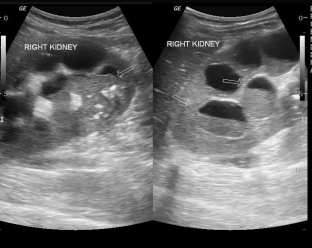As you know, the kidneys are a kind of filter of the human body, which purifies the blood from all the "excess"; and together with the urine removes these substances from the body. This paired organ is one of the most important organs, without which a person cannot live. Pathological conditions that develop in the organs of the urinary system, as a result, can lead to impaired renal function, which is why even the most harmless cystitis requires special attention and timely initiation of treatment. Kidney pyonephrosis is one of the most dangerous complications leading to purulent destruction of this organ. How to diagnose and cure this disease in time – read on estet-portal.com.
Informative diagnosis and effective treatment of kidney pyonephrosis
Kidney pyonephrosis in most cases is the last stage of acute or chronic purulent kidney diseases. This pathology is characterized by the formation in the kidney parenchyma of one large or several small cavities filled with pus. Destroyed kidney tissue prevents it from performing its function, which can ultimately lead to death. The disease often develops on one side, and has a characteristic clinical picture.
It is important to diagnose pyonephrosis of the kidney in a timely manner and to treat it, which will help to avoid life-threatening consequences for the patient.
Pyonephrosis of the kidney:
- laboratory methods for diagnosing pyonephrosis of the kidney;
- instrumental methods for diagnosing pyonephrosis of the kidney;
- surgical treatment of pyonephrosis of the kidney.
Laboratory methods for diagnosing pyonephrosis of the kidney
Diagnosis of kidney pyonephrosis is a rather time-consuming process. During the diagnosis, first of all, attention is paid to the patient's complaints. This pathology is characterized by the presence of hectic temperature, acute pain in the lumbar region, mainly on the side of the lesion, as well as symptoms of intoxication. Important information is provided by palpation data, the results of which determine an enlarged, dense, inactive kidney, which reacts with pain to the manipulation. In laboratory diagnostics, the results of urine tests come to the fore. Visually, it is cloudy, like milk, and has a large amount of sediment. A significant amount of leukocytes, mucus, many microorganisms, erythrocytes and a small amount of protein are determined.
Instrumental methods for diagnosing pyonephrosis of the kidney
Instrumental diagnosis of kidney pyonephrosis provides the following information:
- X-ray examination: the shadow of an enlarged kidney is determined, often the shadow of calculi, the edge of the psoas muscle is not determined, the contrast agent is retained in the enlarged cavities of the kidney;
- retrograde pyelography: cavities in the renal parenchyma are visualized with a non-enlarged or slightly enlarged renal pelvis;
- ultrasound examination: the kidney is enlarged, has uneven contours, echo-negative formations of various sizes with echostructural inclusions due to purulent contents are observed;
- radioisotope study indicates the complete absence of the function of the affected kidney;
- Computed tomography is used for differential diagnosis, it allows you to distinguish a dense formation from a cavity that contains pus.

Surgical treatment of pyonephrosis of the kidney
Treatment of kidney pyonephrosis is exclusively surgical. The patient undergoes a nephrectomy, which in especially difficult cases is performed subcapsularly. Not only the pathologically altered kidney is removed, but also the altered perirenal fiber, which contributes to the healing of the surgical wound and makes it possible to prevent the development of postoperative fistulas. In patients with unilateral pyonephrosis and impaired function of the second kidney during prolonged exacerbations or with pronounced signs of intoxication, a nephrostomy is applied, with the help of which it is possible to drain the affected kidney. In those rare cases when both kidneys are affected by the pathological process, a bilateral nephrostomy is performed, after which several courses of antibiotic therapy are prescribed.







Add a comment